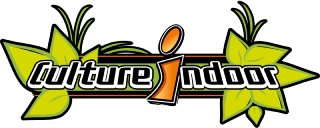Discover all the best phytosanitary practices
I - STORAGE
SAFE, ORDERLY STORAGE AVOIDS ANY RISK OF ACCIDENTAL POISONING, AND PRESERVES PRODUCT EFFICACY.
1 - Keep products out of the reach of children and pets,
and away from food and beverages, including those for animals, in a room:
- Reserved for this use.
- Ventilated, dry and cool, frost-free.
2 - Keep utensils (buckets, bowls, spouts, etc.) in this room
(buckets, bowls, funnels, etc.) reserved for preparations. Identify them, for example, by marking them with paint.
3 - Store cleaned protective equipment (waterproof clothing if possible, etc.) outside this area
(waterproof clothing if possible, gloves, boots, goggles, masks and their filters) to avoid any contamination by the products.
4 - Store products
- In their original, well-sealed packaging, with their label.
Do not decant.
- Sort by category.
Group toxic products together, if possible high up.
5 - No smoking in this area
Maintain electrical installation in good condition. Keep a fire extinguisher (preferably powder) nearby, as well as a supply of absorbent material (vermiculite).
6 - Apply the "first in, first out" principle.
Check packaging regularly for damage.
II - APPLICATION - PROTECTING PLANTS AND THE ENVIRONMENT
BEFORE TREATMENT
1 - Check your equipment
- Check the sprayer (compulsory from 01/01/2003) and repair it.
- Check circuits for leaks - Choose the right nozzles.
- Calibrate and adjust equipment.
2 - Rationalize your intervention
- Observe the crop.
- Heed warnings.
- Choose the most appropriate product.
3 - Read the product label carefully
Respect the prescribed dose, application periods, pre-harvest intervals and precautions for use.
4 - Prepare spray mixture
- Outdoors.
- Near water.
Prepare with utensils reserved for this purpose. To prepare the spray mixture or solution, add a little water to the tank, agitate and add the product. Then top up with water. If several products are used, make sure they are compatible.
5 - Thoroughly empty product containers into the spray tank
- Rinse canisters thoroughly using the canister washer.
- To empty a bag, stand with your back to the wind.
DURING TREATMENT
- Apply solution as soon as prepared
- Maintain constant speed. Do not spray in windy or hot conditions
- Avoid excessive pressure.
- During flowering, only use products labelled "Use during flowering"
- Do not stockpile slug or vole bait.
As soon as you have finished spraying, rinse the sprayer circuit by adding 5 to 10% clear water to the tank and spraying the bottom of the tank over the treated area.
AFTER SPRAYING
1 - Clean equipment thoroughly
- Rinse sprayer with champ.
- Never empty rinse water into a sewer, pit or ditch.
- Replace worn parts (especially the jet).
- Check fragile parts such as the pressure gauge.
- Pressurize single-cylinder engines.
2 - Disposing of empty packaging
Empty packaging must never be abandoned. They should be rinsed (using the bottle washer), dried, pierced (with separate cap) and placed in a plastic envelope for later collection
RECOMMENDATIONS
Plan the volume of spray mixture according to the surface area to be treated.
Never dispose of products in drains or ditches.
Never fill a tank from a watercourse or sewer without a return valve.
Never leave a full sprayer unattended.
III - User protection
During spray preparation and application
Protect yourself effectively against accidental splashes, dust and fumes by wearing the following size-appropriate equipment:
-
Gloves
-
Goggles
-
Boots
-
Protective overalls
-
Mask (if indicated on the label)
Avoid contact with skin and eyes.
Do not eat, drink or smoke while working and until you have washed and changed clothes.
Never unclog filters and nozzles by blowing with your mouth. Use the brush.
After treatment
Clean protective clothing and equipment. Store in a suitable place. Wash thoroughly with soap or shower.
Protection of farm workers
Employers are obliged (Decree of 01/07/1988, enclosed in Pack Protections) to apply a certain number of measures and to provide a written document (decree N.87361 of 27/05/1987).
In the event of accidental splashes
On the skin :
-
Discard contaminated clothing.
-
Wash with soap and water.
In eyes :
Immediately rinse eyes thoroughly with eyewash solution.
In case of Intoxication
Refer to the safety data sheets for the products in question.
If you do not have them, call the Poison Control Center on 0 800 59 59 59 and follow the instructions provided.
Keep the packaging and labels of the product(s) in question to show to your doctor.
In the event of acute poisoning (very rare cases)
React quickly:
-
If the victim is not breathing, give mouth-to-mouth resuscitation.
-
If the victim is unconscious, place him/her in the Lateral Safety Position (lying on his/her side) and cover him/her.
Notify your doctor and the emergency services at n°18 or SAMU at n°15 (from a cell phone, dial 112 for emergency services), with the packaging and label of the product in question.
Never give milk or alcohol to drink.
Do not induce vomiting (unless advised to do so on the product label).
IV - CLASSIFICATION PACKAGING AND LABELLING
BEFORE USE : READ THE LABEL CAREFULLY
All plant protection products are authorized for sale by the French Ministry of Agriculture. Their packaging and labelling bear the following information
- Product name.
- The name and address of the manufacturer, and the web address where safety data sheets can be consulted, where this service exists.
- Sales authorization number.
- Name and content of active ingredients.
- Uses, doses, precautions for use and any restrictions.
In addition, the labels of products containing hazardous substances must carry:
- Hazard symbols and indications (described below).
- A reminder of specific risks.
- Precautionary advice.
V - HAZARD PICTOGRAMS
 |
- Unstable explosives - Explosives, divisions 1.1, 1.2, 1.3, 1.4. - Self-reactive substances and mixtures, type A. - Organic peroxides, type A. |
|
 |
- Substances or mixtures corrosive to metals, category 1. - Corrosion / skin irritation, category 1A, 1B, 1C. - Serious eye damage/eye irritation, category 1. |
|
 |
- Flammable gases, category 1. - Flammable aerosols, category 1, 2. - Flammable solids, category 1, 2. - Self-reactive substances and mixtures, type C, D, E, F. - Pyrophoric liquids, category 1. - Pyrophoric solids, category 1. - Self-heating substances and mixtures, category 1, 2. - Substances and mixtures which, in contact with water, release flammable gases, category 1, 2, 3. - Organic peroxides, type C, D, E, F. |
|
 |
- Acute toxicity, category 1, 2, 3. | |
 |
- Self-reactive substances and mixtures, type B. - Organic peroxides, type B. |
|
 |
- Acute toxicity, category 4. - Corrosion / skin irritation, category 2. - Serious eye damage / eye irritation, category 2. - Skin sensitization, category 1. - Specific target organ toxicity - single exposure, category 3. |
|
 |
- Respiratory sensitization, category 1. - Germ cell mutagenicity, category 1A, 1B, 2. - Carcinogenicity, category 1A, 1B, 2. - Reproductive toxicity, category 1A, 1B, 2. - Specific target organ toxicity - single exposure, category 1, 2. - Specific target organ toxicity - repeated exposure, category 1, 2. - Aspiration hazard, category 1. |
|
 |
- Oxidizing gases, category 1. - Oxidizing liquids, category 1, 2, 3. - Oxidizing solids, category 1, 2, 3. |
|
 |
Gases under pressure: - Compressed gases. - Liquefied gases. - Refrigerated liquefied gases. - Dissolved gases. |
|
 |
- Hazards for the aquatic environment - Acute hazard, category 1. - Hazards for the aquatic environment - Chronic hazard, category 1, 2. |
NO HAZARD PICTOGRAMS FOR :
- Explosive, divisions 1.5, 1.6.
- Flammable gases, category 2.
- Self-reactive substances and mixtures, type G.
- Organic peroxides, type G.
- Reproductive toxicity, additional category: effects on or via lactation.
- Hazards to the aquatic environment - Chronic hazard, category 3, 4.

